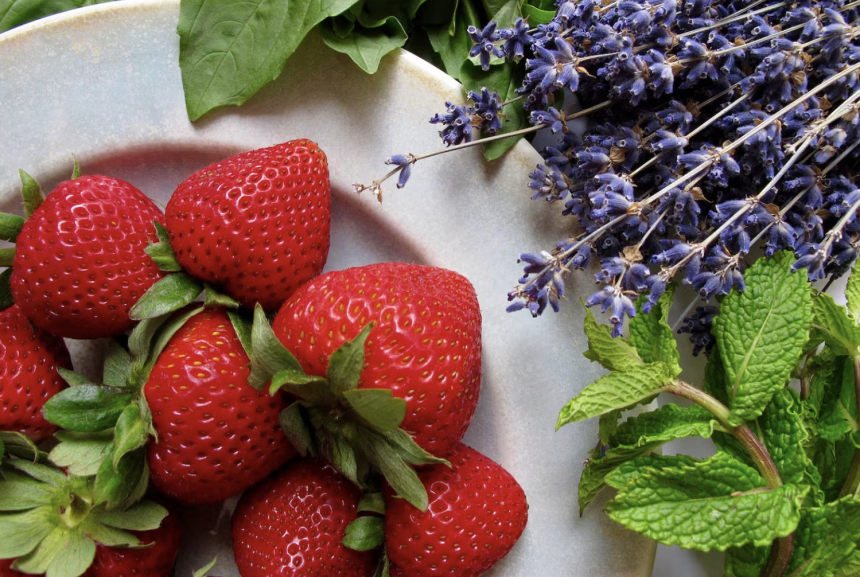Culinary herbs are popular in several dishes because they add aroma, flavor, and depth to food. Depending on the type of dish, these herbs can be used as a primary ingredient, garnish, or seasoning. Many cuisines worldwide use culinary herbs in some form to create distinctive and flavorful dishes, making them a fundamental part of global cuisine.
There are several benefits to using culinary herbs (besides aiding in gut health) Their ability to add flavor and aroma to cuisines has been mentioned above. The right culinary herb can transform a simple meal into a gourmet experience, while their enticing aroma can make dishes more appetizing. Yet, culinary herbs can do far more than these.
Many herbs have potential health benefits, ranging from antioxidant properties to anti-inflammatory effects, immune-boosting properties, and weight management. Some herbs help with gut, skin, respiratory, and oral health. These health benefits are appealing to many people.
Using herbs can reduce the need for excessive salt and sugar in recipes due to the flavor they impact, thereby contributing to healthier eating habits, which is crucial to good health.
Below is an overview of some of the most common culinary herbs and how they can enhance your kitchen creation. Here we go.
. Basil: The Classic Green Elegance
Basil is easily among the most popular culinary herbs in the world. It’s a member of the mint family and comes in different varieties, with some of the most prominent ones being sweet basil, Thai sweet basil, lemon basil, and holy basil.
Easily identified by its glossy, deep green color and pointed leaves, basil is used in fresh and dried forms. The taste it impacts on food can be somewhere between sweet and savory, while it confers a rich aroma to cuisines.
The most common way to use basil is to add fresh leaves as a garnish or ingredient. Simply tear or chop the leaves and sprinkle them over salads, pizzas, sandwiches, or pasta dishes before serving. Basil is also used in sauce with Pesto sauce and Tomato Basil sauce among the popular recipes that use Basil in this manner. Basil has also been incorporated into salads, beverages, and butter.
Significant health benefits of basil include immune system support, antioxidant properties, anti-inflammatory properties, digestive health, and anti-microbial properties.
. Mint: More Than a Mojito Maker
People hear mint and immediately think of Mojitos and Mint juleps as these beverages take advantage of the refreshing and aromatic flavor of the herb. But if you believe mint is limited to cocktails and beverages, then you aren’t utilizing the full potential of this aromatic herb.
Mint has a subtly sweet flavor and produces a unique cooling sensation thanks to the abundance of menthol in the herb. Fresh mint is used in cuisines, while the dried form is commonly used in tea making.
You can use fresh mind as a garnish to add color (the leaves are tender and bright green) and fresh aroma to salads, desserts, and savory dishes. Mint sauce, mint pesto, and mint curries and soups are other cuisines that use fresh mint.
It’s worth mentioning that mint has a strong flavor, so a little goes a long way. It’s best to taste as you go when adding mint to your dishes to ensure it doesn’t overpower the other flavors.
Mint has antimicrobial properties, aids digestion, freshens breath, has antioxidant properties, and provides respiratory relief, among other health benefits.
. Cannabis: Elevating Your Culinary Creations
A rising fascinating element in culinary herbs is cannabis, also known as marijuana. There’s a lot of controversy and debate about cannabis, but in areas where cannabis has been legalized, marijuana enthusiasts can elevate their culinary creations with cannabis. Placing an order with a reputable Marijuana Dispensary and Delivery service is the beginning of your journey into the world of culinary cannabis.
Dried cannabis is typically used in cooking, as decarboxylating is more effective in this form. Decarboxylation involves heating cannabis at a specific temperature (usually around 240°F/115°C) for about 30 – 45 minutes to activate cannabinoids, the compounds responsible for the unique effects of cannabis. It’s an essential process of cooking with the herb.
Cannabis-infused foods, often called “edibles,” are among the most popular ways to enjoy cannabis in cuisine. These include baked goods like brownies and cookies, gummies, chocolates, and savory dishes like pasta sauces or salad dressings. You can also infuse cannabis into beverages like teas, coffees, and cocktails. Proper dosage control is crucial when preparing and consuming edibles.
Potential health benefits of cannabis include reducing inflammation, preventing addiction relapse, managing anxiety disorders, preventing seizures, and lowering blood sugar.
. Dill: A Fresh Herb with a Bold Flavor
Dill is a versatile herb known for its fresh, grassy, and slightly tangy flavor. This herb is commonly used in culinary dishes to add a distinctive and aromatic taste. You can use dill in fresh and dried form, with the latter being the preferred option when fresh dill is unavailable or when a milder dill flavor is desired.
It’s common to see dill added to salad and seafood, with the herb’s bold flavor complementing that of fish and other seafood. A key ingredient in dill pickles, dill is responsible for the characteristic flavor of the dish. You can also use dill in pickling other vegetables like cucumbers, green beans, and carrots.
Immune support, antimicrobial activity, antioxidant properties, and digestive aid are some of the health benefits of dill.
Lynn Martelli is an editor at Readability. She received her MFA in Creative Writing from Antioch University and has worked as an editor for over 10 years. Lynn has edited a wide variety of books, including fiction, non-fiction, memoirs, and more. In her free time, Lynn enjoys reading, writing, and spending time with her family and friends.















